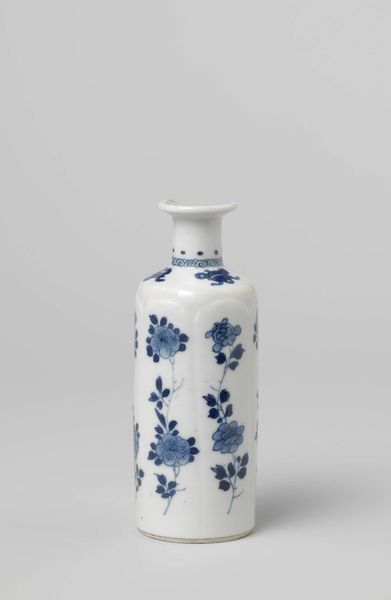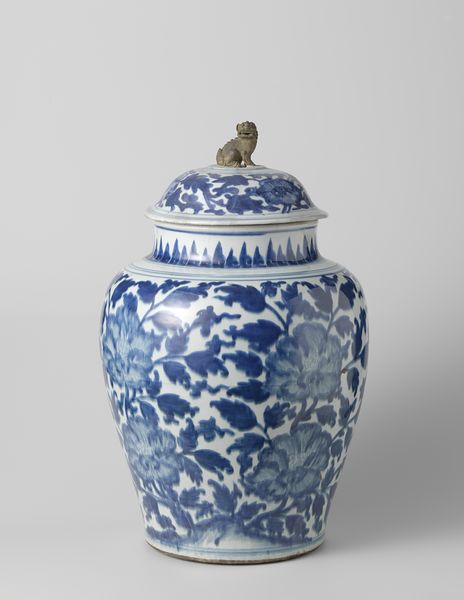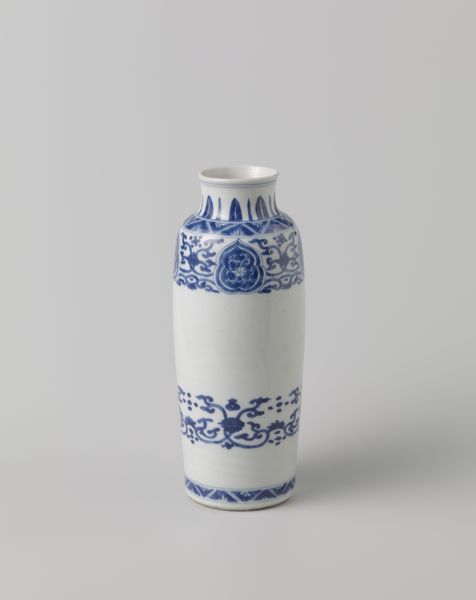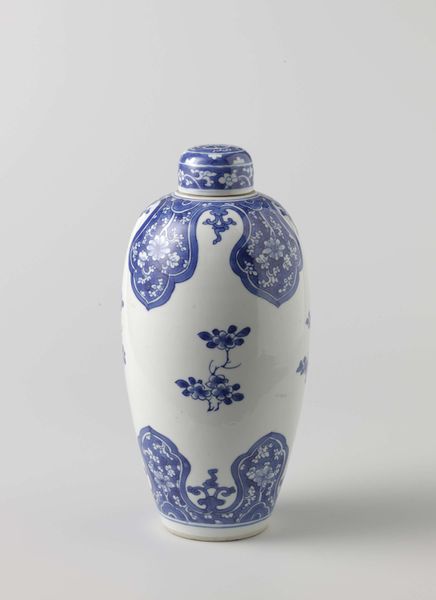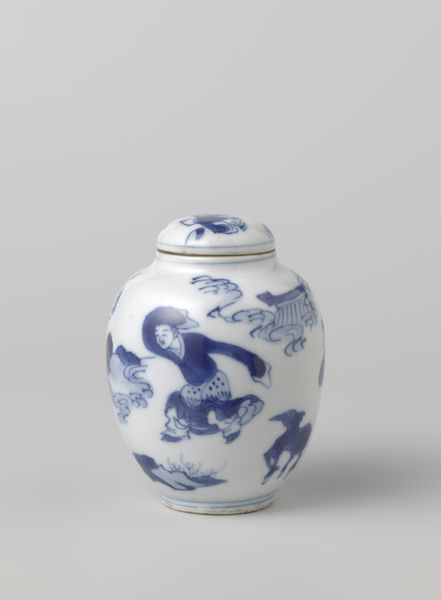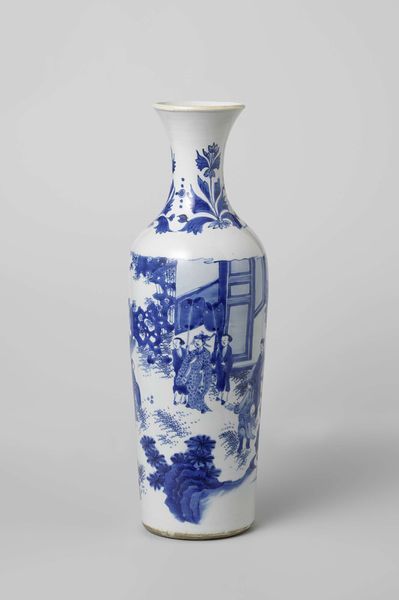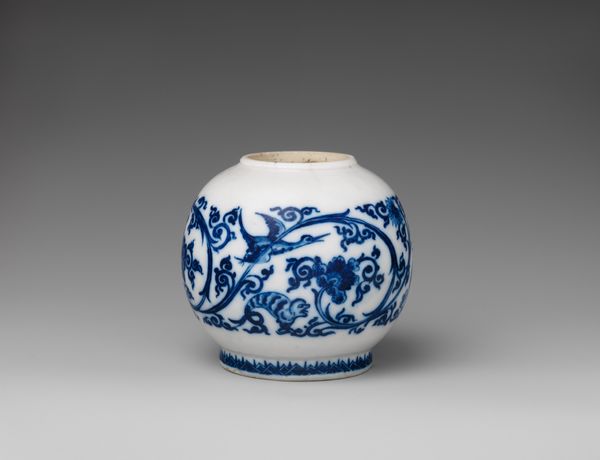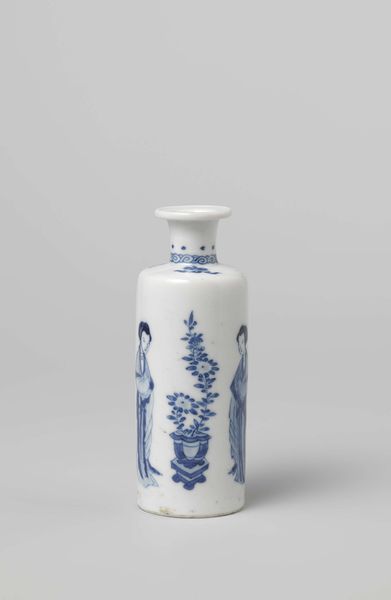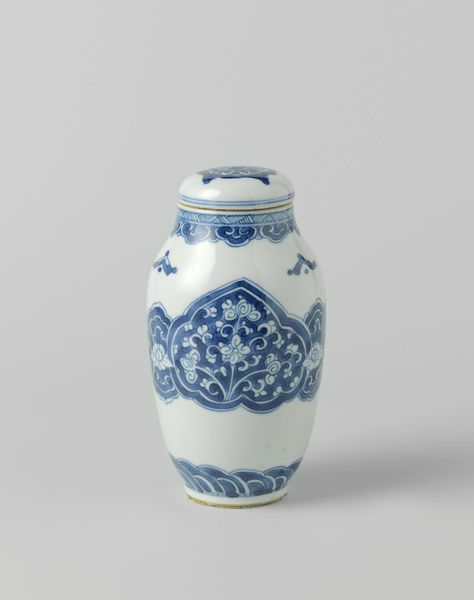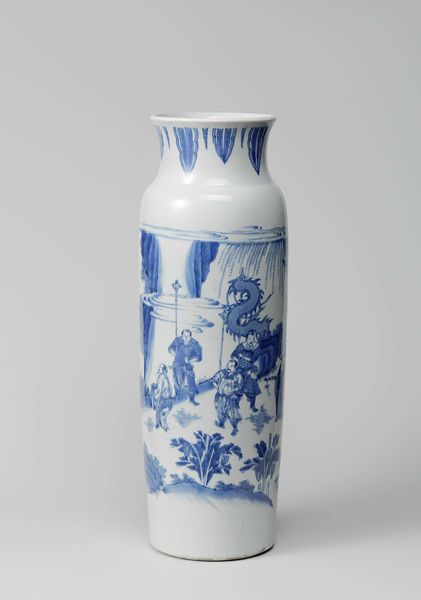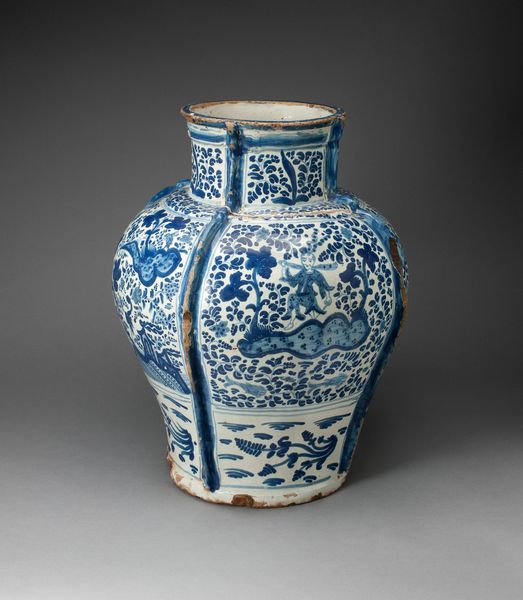
Ovoid covered jar with peachblossoms on 'crackled ice' and antiquities c. 1680 - 1720
0:00
0:00
anonymous
Rijksmuseum
ceramic
#
asian-art
#
ceramic
#
stoneware
#
ceramic
#
decorative-art
Dimensions: height 17 cm, diameter 12 cm
Copyright: Rijks Museum: Open Domain
Editor: Here we have an ovoid ceramic jar with a lid, dating back to between 1680 and 1720. The anonymous artist has painted it with peach blossoms on what's described as 'crackled ice' and antiquities in a vivid blue and white. The scenes are intriguing. What does this kind of decorative art reveal about its period? Curator: This piece speaks volumes about cross-cultural exchange and the taste for exoticism that defined much of the 17th and 18th centuries. The Rijksmuseum label emphasizes 'crackled ice' decoration, what stories can be gleaned about production, cultural impact and political image from that alone? Editor: I guess the crackled ice might evoke winter scenes, something familiar from a different climate perhaps? How would this ceramic, displaying 'crackled ice,' peach blossoms, and classical motifs, have functioned in society? Curator: Exactly! The 'crackled ice' design, alongside peach blossoms representing spring, presents a kind of imported 'chinoiserie' style that was enormously popular with European elites. They are creating fantasies about far away lands. The objects portrayed are more interesting than their representations: What statements of knowledge and power are such scenes making when the depicted objects stand as surrogates for actual Chinese pieces in elite European collections? How was displaying or gifting pieces like this jar was used to perform an aesthetic power during the 17th and 18th centuries? Editor: So, owning or gifting this wasn’t just about appreciating beauty but about signalling your status and knowledge? Curator: Precisely. And think about the artisans crafting these. Were they simply copying, or were they actively interpreting and shaping European perceptions of China? This interplay makes this object fascinating, showing that cultural exchange isn’t one-way, and that ceramics become stages for intercultural visual plays. Editor: That definitely changes how I see it. It's more than a pretty jar; it's a political object! Curator: Absolutely. It challenges us to examine how art serves as a reflection of societal dynamics and the ways power is expressed through aesthetics.
Comments
No comments
Be the first to comment and join the conversation on the ultimate creative platform.
